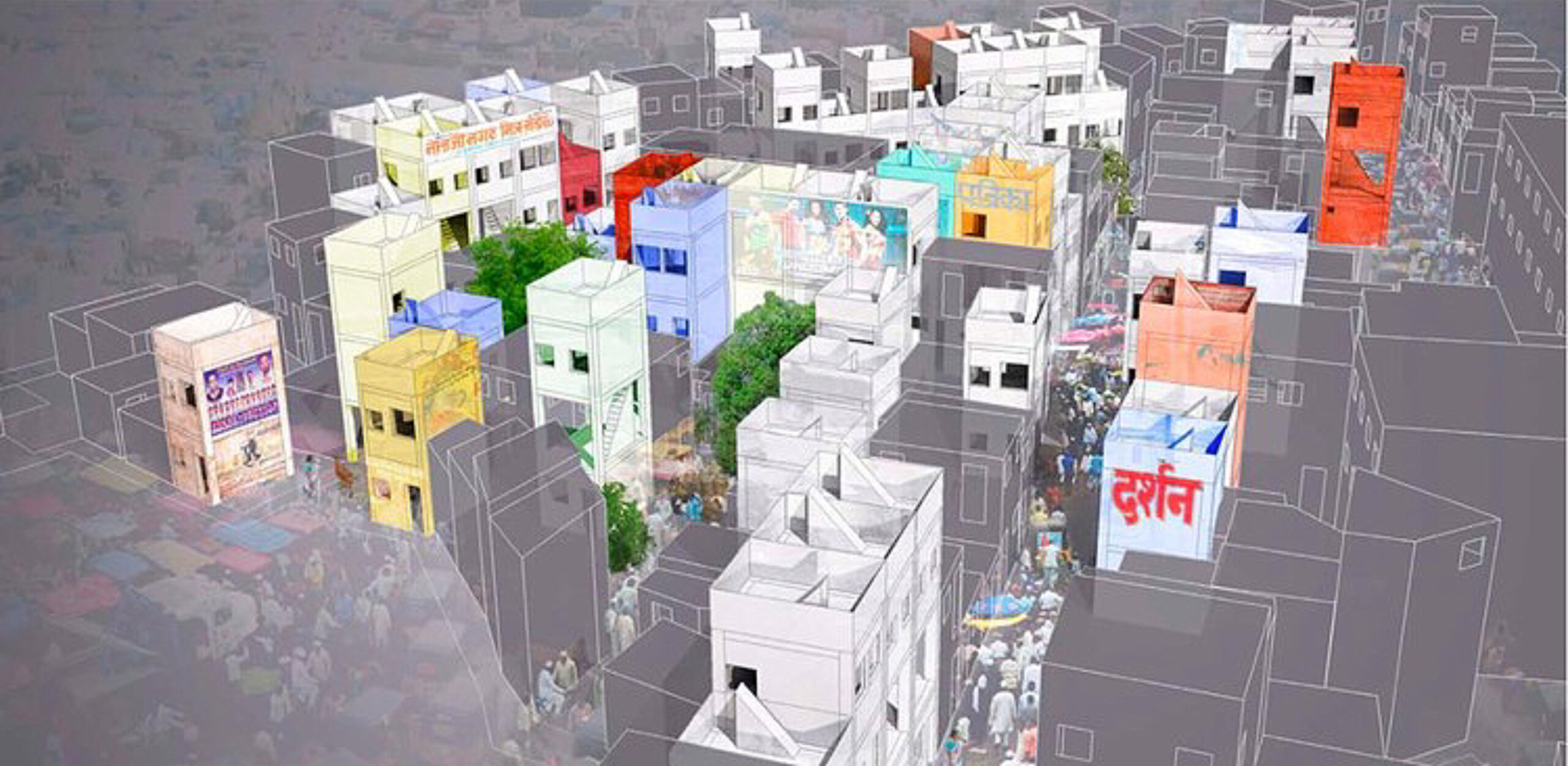| Location | Vila Cruzeiro, Rio de Janeiro, Brazil |
| Date | 2005-present |
| End User | 34 houses and nearby favela residents |
| Implementing Agency | Soldados Nunca Mais Program of the Ibiss Foundation |
| Design Firm | Haas&Hahn |
| Artists | Jeroen Koolhaas, Dre Urhahn, young men living in the Rio Favelas |
| Funder | Grants, donations, sponsorships |
| Cost | $200 000 USD |
| Area | 150 sq m/1614 sq ft (Boy With Kite); 2000 sq m/21 527 sq ft (Rio Cruzeiro); 7000 sq m/75 347 sq ft (Praça Cantão) |

Colorful painted rays decorate the exteriors of 34 houses in the hillside slum Praça Cantão in the center of Rio de Janeiro, Brazil. Artists Jeroen Koolhaas and Dre Urhahn (Haas&Haan) enlisted locals to help create the artwork spanning 7000 square meters. Photo: Haas&Hahn
About 827 million people live in slums worldwide. Yet investments focused on water sanitation and infrastructure do little to mark a visual change in the community. With minimum expenditure in comparison to mainstream interventions, street artists are reimagining informal settlements from Kenya to Brazil.

The mural Boy with Kite (pictured) was the first in the Favela Painting Project. Photo: Haas & Hahn
In 2006, after filming a documentary for MTV in Rio de Janeiro and São Paolo, Brazil, Dutch painters Jeroen Koolhaas and Dre Urhahn were inspired to start the Favela Painting Project through their new organization, Haas&Hahn. They created murals in two poor areas to help beautify the landscape. “All the hills are covered with slums and the slums are used as the scapegoats to all the problems of Brazil,” Urhahn says. “We wanted to make a visual intervention, so that just by looking at the favelas you get a completely different perspective and you are forced to change your thinking.” As of 2010, three large-scale painting projects had been completed.

Japanese-style painted river, Rio Cruziero, 2008. Photo: Haas & Hahn
The program hires and trains young men from the community to paint in the favelas, providing an alternative direction for the most likely demographic to join gangs. “Everybody asks me if I made that painting,” said Vitor Luis da Silva, 15, while playing basketball on a court next to the mural Boy with Kite, spanning 150 square meters (1614 sq ft). “Thanks to God, yes. I learned a lot by doing it. If I wasn’t involved in these projects, I think I would be in the drug gang, maybe even shooting,” he said.
Faces of Favelas
| Location | Kibera, Kenya; Morro da Providência, Rio de Janeiro, Brazil |
| Dates | 2003-present |
| Artist | JR |
| Featured Projects | 28 Millimeters: Women Are Heroes; The Wrinkles of the City; Face2Face |
| Funder | Self-funded |

Women Are Heroes Project, Morro da Providência, Rio de Janeiro, Brazil, 2008 Photo: jr-art.net
After the first mural, people took note and thousands poured in the favelas for the 2008 Rio Cruzerio opening ceremony to see the Japanese-style painted concrete river of fish swimming 2000 square meters (21 527 sq ft) down the hillside. In addition to tourists visiting the favelas to view the art, the employment opportunities for the young men who worked on the project are expanding. “If I wasn’t involved in these projects, I think I would be in the drug gang, maybe even shooting,” da Silva says.
Residents of the area have a new perception of their neighborhood, especially the 34 houses painted in colorful stripes for the O Morro project. “We wanted to find a way for these people to have a sense of pride about their neighborhood and to show the outside world that they feel good about themselves. By putting a small film of paint on the whole surface of the favela we thought that we would be able to bridge this gap,” Jeroen Koolhaas says.
Haas&Hahn hope to expand the project, bringing color to the strong-spirited community as it strives to overcome crime and violence.
JR, a photographer from Paris, is similarly bringing art to slums. In 2006, JR went to Clichy Montfermeil, a low-income area of Paris, and took portraits of community members. He then pasted them in the bourgeois areas of Paris to draw attention to the conflicts.
Motivated by an ambitious mission “to post art all over the world,” JR travels to conflict areas and uses renegade art to amplify the issues. His projects focus on women as heroes, among other themes. “I want to celebrate the strength and courage of women who live in places where they are targets in wartime and are descriminated against in times of peace,” he says.


Women Are Heroes project, Morro da Providência, Rio de Janeiro, Brazil, 2008. Photo: jr-art.net
Women Are Heroes Project, Kibera Slum, Nairobi, Kenya, 2009. Photo: jr-art.net
















READ OR LEAVE A COMMENT